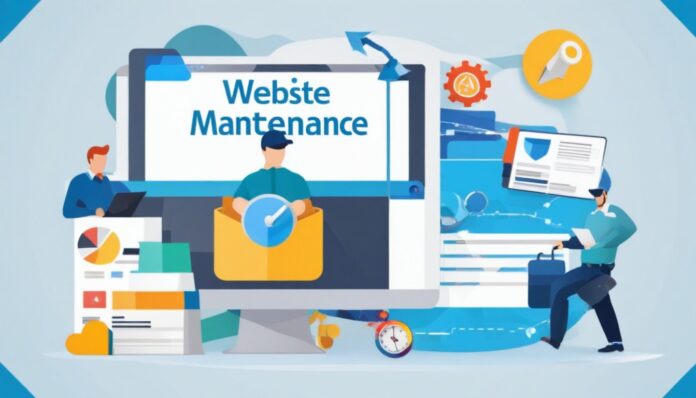Website Maintenance: A Comprehensive Guide
Websites are essential for businesses in today’s digital age. They are often the first point of contact for potential customers, and they can play a major role in generating leads and sales. However, just like any other physical asset, websites require regular maintenance to stay up-to-date, secure, and functioning properly.
In this comprehensive guide, we will discuss everything you need to know about website maintenance. We will cover the following topics:
- The Importance of Website Maintenance
- Types of Website Maintenance
- Creating a Website Maintenance Checklist
- Tips for Effective Website Maintenance
- Common Website Maintenance Mistakes to Avoid
The Importance of Website Maintenance
There are many reasons why website maintenance is important. Here are just a few:
- Security: Websites are often targeted by hackers, so it is important to keep your website software and plugins up to date to patch any security vulnerabilities.
- Performance: Over time, websites can become cluttered with unused files and code, which can slow down loading times. Regular maintenance can help to improve your website’s performance.
- Functionality: As new technologies and standards emerge, it is important to update your website to ensure that it remains compatible and functional.
- User experience: A well-maintained website is easier to navigate and use, which can lead to a better user experience and higher conversion rates.
- SEO: Search engines like Google take website maintenance into account when ranking websites. A well-maintained website is more likely to rank higher in search results.
Types of Website Maintenance
There are two main types of website maintenance: preventive and corrective.
-
Preventive maintenance is the process of taking steps to prevent problems from happening in the first place. This includes tasks such as:
- Updating website software and plugins
- Backing up your website data
- Testing your website for errors
- Monitoring your website’s performance
-
Corrective maintenance is the process of fixing problems that have already occurred. This includes tasks such as:
- Troubleshooting website errors
- Fixing security vulnerabilities
- Restoring your website from a backup
Creating a Website Maintenance Checklist
The best way to ensure that your website is properly maintained is to create a checklist of tasks that need to be done on a regular basis. The specific tasks on your checklist will vary depending on your website, but some common tasks include:
- Update website software and plugins: This should be done at least once a month.
- Back up your website data: This should be done daily or weekly.
- Test your website for errors: This should be done at least once a month.
- Monitor your website’s performance: This can be done using a variety of tools, such as Google Search Console and Pingdom.
- Review your website analytics: This can help you to identify areas where your website can be improved.
Tips for Effective Website Maintenance
Here are a few tips for effective website maintenance:
- Automate as much as possible: There are a number of tools that can automate tasks such as backing up your website data and updating software.
- Use a content management system (CMS): A CMS can make it easier to update your website content without having to know how to code.
- Hire a professional: If you don’t have the time or expertise to maintain your website yourself, you can hire a professional to do it for you.
Common Website Maintenance Mistakes to Avoid
Here are a few common website maintenance mistakes to avoid:
- Not updating your website software and plugins: This is one of the most common website maintenance mistakes, and it can leave your website vulnerable to security attacks.
- Not backing up your website data: If your website crashes, you could lose all of your data if you don’t have a backup.
- Not testing your website for errors: Errors can make your website look unprofessional and can also prevent visitors from being able to find what they are looking for.
- Not monitoring your website’s performance: A slow website can lead to lost visitors and sales.
- Not reviewing your website analytics: Your website analytics can tell you a lot about how your website is performing and where you can improve it.
By following the tips in this guide, you can ensure that your website is well-maintained and functioning properly. This will help you to protect your website from security threats, improve your website’s performance, and provide a better experience for your visitors.
I hope this article has been helpful.











